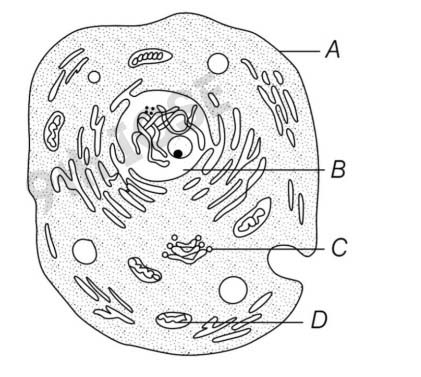Q1 Briefly give the contributions of the following scientists in formulating
the cell theory
(i) Rudolf Virchow (ii) Schleiden and Schwann
Solution :
(i) Rudolf Virchow (1855) He was the first to explain that the cells divide and
new cells are formed from the pre-existing cells (omnis cellula-e-cellula). He
demonstrated that the cell theory applies to diseased tissue as well as to
healthy tissue. He also engaged his research in the fields of archaeology and
anthropology.
(ii) Schleiden and Schwann They observed the animal and plant cells. They also
proposed the cell theory. This theory explains that all animals and plants are
composed of cells, which serve as the units of structure and function.
Q2 How are chromatin, chromatid and chromosome related to each other?
Solution :
Structure of a Nucleus :
(i) Nuclear membrane - encloses nucleus in the eukaryotes. The nuclear
membrane is penetrated by large nuclear pore complexes, which selectively
transport molecules into or out of the nucleus.
(ii) Nucleoplasm - It is the protoplasm in the nucleus and contains genetic
material (DNA), chromosomes and nucleolus.
• Chromatin is thin thread-like structure made up of DNA and proteins.
• It condenses during cell division to form a thick rod-like structure called
chromosome.
• Each chromosome consists of two similar halves called chromatids.
(iii) Nucleolus It is the most important site of RNA synthesis.
Q3 How do multicellular organisms show division of labour?
Solution :
The body of a multicellular organism contains cell as a basic structural unit.
• The cells are organised to form tissues such as blood, bone, etc.
• The tissues are organised to form organs such as heart, kidney, etc.
• The organs are further organised to form organ systems such as digestive
system, reproductive system, respiratory system, etc.
Hence, various organ systems of organism get arranged to form a complete
individual, showing division of labour.
Q4 State some common features of both plant and animal cells.
Solution :
The features common to both animal and plant cells are:
(i) Organelles like-nucleus, mitochondria, endoplasmic reticulum, plasma
membrane, cytoplasm, ribosomes and Golgi apparatus
(ii) Both types of cells undergo cell division.
(iii) Cellular respiration occurs in both type of cells.
Q5 Select the odd one out:-
(i) Nuclear membrane, nucleolus, DNA and cytoplasm.
(ii) Chloroplast, chromoplast, leucoplast and protoplasm.
(iii) Amoeba, Paramecium, Euglena, Hydra.
(iv) Yeast, mycoplasma, bacteria, mushroom
Solution :
(i) Odd term–Cytoplasm
Other terms are related with structure of nucleus.
(ii) Odd term–Protoplasm
Other terms are related with plastids of plant cell.
(iii) Odd term–Hydra (a multicellular organism)
Other terms are unicellular organisms.
(iv) Odd term–Mushroom (multicellular)
Other terms are unicellular organisms.
Q6 Write main functions of the following cell organelles:-
Solution :
(i) Plasma membrane - It acts as a semipermeable membrane and allows only
selective substances to pass through it.
(ii) Nucleus - Control centre of the cell. It contains the cells DNA (genetic information) in the form of genes.
(iii) Mitochondria - The main function of mitochondria in aerobic cells is the
production of energy by synthesis of ATP.
(iv) Chloroplasts - These are the sites of photosynthesis within plant cells.
(v) Lysosomes - The breakdown of unwanted macromolecules into micro
molecules is the main function of these organelles.
Q7 Differentiate between the following:-
(i) Cytoplasm and protoplasm
(ii) Nucleus and nucleolus
(iii) Chloroplast and chromoplast
(iv) Cell wall and cell membrane
(v) Unicellular and multicellular organisms
Solution :


Q8 Answer the following questions:-

(i) Label the parts A-D.
(ii) Name a structure in this cell that is absent in plant cell.
(iii) What is the function of labelled part B in the physiological activity of the
cell.
(iv) Write one function of cell structure labelled D.
Solution :
(i) A. Cell membrane B. Nucleus B. Golgi body D. Mitochondrion
(ii) The structure absent in plant cell - Centriole
(iii) The Nucleus - Controls cellular activities.
(iv) It is the powerhouse of a cell and produces energy by respiration.



